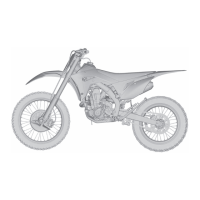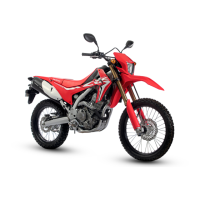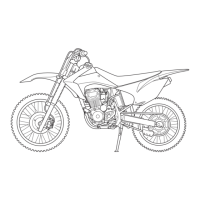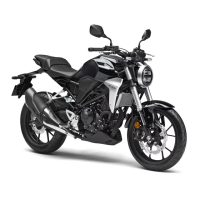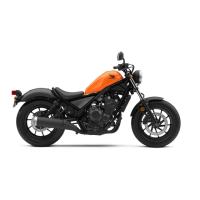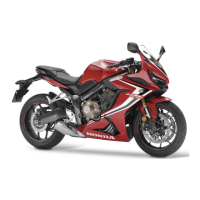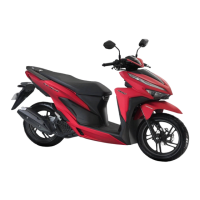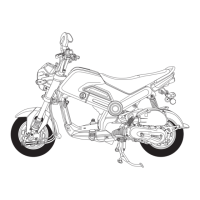Tire Selection for Track Conditions (Off-Road Use Only)
Adjustments 155
Choosing the correct tire tread pattern and rubber
compound can
affect your placing in off-road use.
The tires on your motorcycle offer a “happy
medium” for the variety of soil conditions the
majority of riders are likely to encounter.
Experienced competitors often switch to tires
developed for specific terrain conditions. If you do
switch, stay with the factory recommended sizes.
Other tires may affect handling or acceleration.
Be aware that tire sizes (width and aspect ratio) do
vary from manufacturer to manufacturer or even
among tires made by the same manufacturer.
Variations in tires, especially the sidewall profile,
can change the attitude of your motorcycle and its
handling. Tire variations that raise or lower the
rear of your motorcycle have a more significant
effect on handling than variations in front tires
which, generally, don’t vary as much.
Often, you can see or feel the change in tire size.
Another way to check is to measure the rolling
circumference of the old and new tires. A higher
profile tire will have a larger rolling
circumference.
If you do switch to tires designed for special terrain
use, remember they will be less acceptable in other
circumstances. For example, an aggressive mud
tire will give excellent grip on wet, loamy terrain,
but less impressive grip on a hard surface.
If you choose a tire with a sticky compound for
added traction, remember that it may transfer
additional loads to the transmission because it
grips so well, especially when riding in situations
that normally place unusual demands on the
transmission.
Complete consumer information can be obtained
from the various tire manufacturer representatives
and dealers.
Some general recommendations for specific
terrain follow:
Hard, Slick Soil
Use tires with many relatively short knobs that are
close together in order to obtain the largest
possible contact patch on the surface. The rubber
compound needs to be softer for hard ground in
order to hook up, but not so soft that the knobs roll
over easily and affect holding a straight line.
These tires tend to wear more quickly than
standard tires because of the combination of soft
rubber and hard terrain.
Muddy Soil
Use a more open tread pattern to avoid clogging.
For these conditions, the relatively long knobs will
probably be made from a harder rubber compound
to reduce any tendency to bend back under
acceleration or wear quickly.
Loose, Sandy Soil
Use a tire that is similar in construction to those
needed for tacky soil and mud, but with a few more
knobs.

